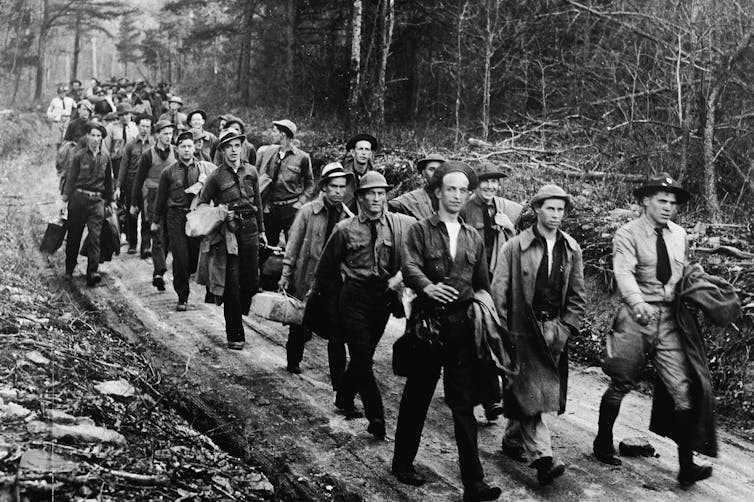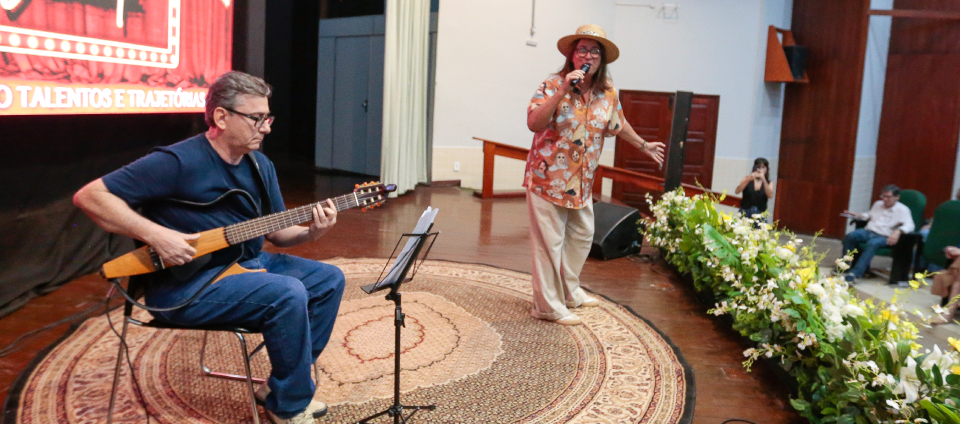If elected, Donald Trump has vowed to demolish what he calls the “deep state” – a conspiratorial term for the American federal bureaucracy. A second Trump administration, running mate JD Vance has said, should fire thousands of civil servants and replace them with MAGA loyalists.
Trump has said he would tap the billionare Elon Musk as the hatchet man to lead his proposed government commission on “efficiency” in government.
Compared with the other fireworks of the campaign – like Trump’s promise to criminally prosecute his political rivals and suppress news organizations – threats to gut the United States’ vast federal bureaucracy don’t get much attention. But doing so is a big a threat to democracy.
For years, conservatives have claimed that taking power from government agencies gives it back to the people. Yet while it might seem counterintuitive, Americans actually exercise their sovereignty through the administrative state.
The American administrative state was established almost 100 years ago by President Franklin Delano Roosevelt. As a historian of American democracy, I think it’s valuable to remember what the old deal looked like while Trump rails against the New Deal.
The Gilded Age
Around 1900, America was not really democratic. The federal government did not rule by the consent of the governed. As historian Heather Cox Richardson recently argued, the American government was an oligarchy.
Millions of working-class Slavs, Jews, Italians, Asians and Scotch-Irish Appalachians toiled mercilessly in death-trap sweatshops, suffocating mines and fiery steel mills. Cotton farmers in the Black Belt lived like peons.
These people were America’s “other half,” as the social reformer Jacob Riis called them in 1890. And they were effectively excluded from the social contract.
Meanwhile, for rich white men like Andrew Carnegie and John D. Rockefeller it was, as Mark Twain quipped, a “Gilded Age.” Robber barons ran their industrial empires with impunity.
When their employees tried to organize or protest, industrialists got sheriffs and police to suppress them. Or they hired private armies of “detectives,” like the Pinkertons, as Carnegie did when steelworkers struck in Homestead, Pennsylvania.
Governors called in the National Guard, as Ephraim Morgan did in 1921 to suppress a labor dispute in West Virginia. Sometimes, it was the regular Army, as in 1919, when soldiers from Camp Pike propped up the peonage system of tenant farming by indiscriminately machine-gunning Black farmers hiding in the woods outside Elaine, Arkansas.
Hulton Archive/Getty Images
‘We stand at Armageddon’
Forced by popular clamor, Congress decided to act.
It created the Interstate Commerce Commission in 1887 and told its commissioners to compel railroads, which were gouging some customers and favoring others, to charge fair rates to everyone.
This was the start of federal regulation.
In 1895, the New York Legislature passed the Bakeshop Act, making it illegal to force an employee to work more than 10 hours a day or 60 hours a week.
The Supreme Court, however, was still friendly to business. In its 1905 decision in Lochner v. New York, the court ruled against the Bakeshop Act. No one could regulate the workday or work week. The decision stripped Congress and state legislatures of their nascent regulatory powers. That enraged President Teddy Roosevelt.
“(T)he right of the people to rule,” Roosevelt later thundered, had been usurped by the corporations. With apocalyptic fury he predicted, “We stand at Armageddon!”
That was in 1912. The Lochner era, as historians call this period when workers and the public had few protections from exploitative businesses, lasted another 20 years.
Then, in 1929, the U.S. economy collapsed.
One-quarter of Americans had no work. Starving and desperate migrants wandered across the country. An army of veterans marched on Washington.
The apocalyptic misery of the Great Depression finally made American oligarchy untenable.
Liberal democracy
In 1932, the people rewrote the social contract: They elected Franklin Delano Roosevelt and his New Deal in a landslide.
It was, in essence, a revolution. After nearly 60 years of corporate domination, the 1932 election would “return America to its own people,” to use Roosevelt’s words.
Of course, it was not really a “return.” In the precorporation world, most Americans – notably women and Black people – couldn’t participate in their own government. But 1932 was a giant step toward democracy. And the great innovation that would usher in this modern, liberal democracy was the administrative state: a meritocracy of career civil servants dedicated to carrying out the law.
Have you ever wondered why a green light means “go” in every state? In 1935, the Bureau of Public Roads – now the Federal Highway Administration – wrote and enforced its first Manual on Uniform Traffic Control Devices for Streets and Highways.
That’s the administrative state in action. It’s how 122 million people cooperated to make complex, modern society work – without surrendering their sovereignty to some dictator like Benito Mussolini or Josef Stalin.

Photo by New York Times Co./Getty Images
But the Supreme Court kept striking down New Deal laws and regulations.
After a massive electoral victory in 1936, FDR threatened to “pack” the court by raising the number of justices from nine to 15. Finally, the court relented. In a 5-4 decision, it allowed the state of Washington’s Industrial Welfare Committee to establish a minimum wage – $14.50 for a 48-hour work week.
Most history textbooks don’t mention this milestone, but that’s when liberal democracy was secured.
To be sure, it would take almost 30 more years before the Civil Rights Acts of the 1960s brought democracy to the Jim Crow South. But even that victory depended on the Justice Department’s power to regulate elections in historically white supremacist states.
The administrative state has been protecting the rights of ordinary Americans and executing the sovereignty of the people for the past 87 years.
Who grounded Boeing airplanes when a door blew off a 737 in midflight? It was civil servants in the Federal Aviation Administration, a government agency founded by Congress in 1958 “to regulate civil aviation.”
Why does the U.S. have cleaner air and water today than it did in the 1960s? Because in 1970, Congress passed the Clean Air Act, and a new Environmental Protection Agency was empowered to write and perpetually rewrite regulations that execute Congress’ antipollution laws.
The alternative
This system produces the occasional injustice or overreach.
A farmer’s puddling acre, for example, might be overregulated as a “wetland.” A fishing company might be ordered to maintain a government-appointed herring counter at a cost of $710 a day.
But gutting regulatory agencies and replacing a meritocratic bureaucracy with MAGA loyalists won’t help small farmers or family-owned fishing boats. It will empower big corporations to pollute, exploit their workers, price-gouge customers, cut corners on safety – and to corrupt the political system.
It’s also illegal. Congress has deliberately protected those bureaucrats from the volatility of presidential politics.
Unlike presidential appointees, who serve at the pleasure of the president, civil servants work for the people. They are empowered by Congress, and the president cannot fire them. At least for now.

Warning: Undefined variable $user_ID in /home/u824415267/domains/acre.com.br/public_html/wp-content/themes/zox-news/comments.php on line 48
You must be logged in to post a comment Login